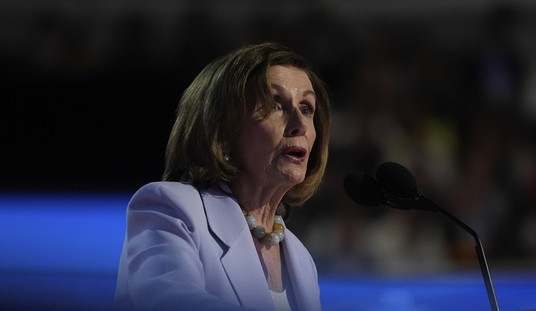
On Saturday at the Associated Press, aka the Administration’s Press, reporter Christopher Rugaber described the economy’s pickup of 321,000 payroll jobs in November as “booming.”
Not so fast, pal.
Even if you accept that November’s seasonally adjusted result fairly reflects the underlying reality — and it doesn’t, which will be shown shortly — it will only be “booming” once we see such a figure repeated for at least five more months. On a workforce-adjusted basis, the analogous post-recession period during Ronald Reagan’s presidency in the 1980s had a streak of 19 out of 20 months with an equal or better performance than just seen in November while averaging 323,000 monthly job additions over 65 months. Monthly job growth during the Obama administration’s 65-month faux recovery has averaged only 140,000.
Additionally, the seasonal adjustment process at the Bureau of Labor Statistics — an attempt to normalize results to smooth out normal and supposedly predictable fluctuations occurring throughout the year — generated an artificially high November result, as illustrated in the following comparison:

As seen in the red boxes, BLS currently estimates that the economy really added 497,000 jobs in November. That’s 26,000 fewer than were added in November 2013. Yet somehow, after seasonal adjustment, November 2014 came in 47,000 jobs higher than the same month last year. A more reasonable seasonally adjusted result in Friday’s report would have been in the neighborhood of 250,000 — far from awful, but definitely not “booming.”
By contrast, as seen in the green boxes, October’s seasonally adjusted result understated that month’s strength. Before adjusting for workforce size, the 1.051 million in estimated job additions that month is the best result since the government began monthly recordkeeping in 1939, and is 107,000 jobs greater than November 2013. October is the month which should have seen a seasonally adjusted result well above 300,000; instead, it was barely better than October 2013.
What’s going on here?
As the New York Post’s John Crudele paraphrased former Bureau of Labor Statistics head Keith Hall last year:
All parts of Washington’s data-collecting machine adjust to smooth out the bumps caused by the seasons of the year. But the recession that started five years ago was so severe and the recovery so anemic that the seasonal adjustments have been thrown off.
Gee, I’ve been saying that for over five years, including this statement from mid-2011:
In normal times, it’s usually acceptable for data users to stick with seasonally adjusted (SA) information while avoiding the adventure of delving into and analyzing the raw, not seasonally adjusted stuff. But these are not normal times. … In abnormal times such as these, you cannot be sure that the SA data adequately reflects what’s happening in the raw information.
To be clear, I’m not alleging that the BLS is deliberately engaging in deception in its Establishment Survey of employers — yet. But the agency knows how misleading its official adjusted data have often been, and has done next to nothing to alert the public to the problem. Meanwhile, reporters in the business press, most of whom know better, still treat the adjusted numbers as gospel while barely acknowledging the raw numbers’ existence.
Thus, the public has every reason to believe that November was a great month in the job market, while October was lukewarm. The reality is exactly the opposite — which should be leading people to wonder if economic conditions might once again be deteriorating.
One likely reason why the press isn’t interested in touching the BLS’s detailed machinations is the strong likelihood that there have been and continue to be problems with data integrity and manipulation in the Household Survey. That’s the Census Bureau-managed operation which collects the information used to calculate the nation’s unemployment rate and the civilian population’s degree of engagement.
The Post’s Crudele, virtually the only reporter in the land pointing out the fundamental problems in the government’s jobs reports, noted last week that “whistleblowers in five of the six Census regions in the US have alleged data were being falsified on a regular basis.” The falsification is occurring because workers who can’t meet the Department of Labor’s aggressive and likely unrealistic survey completion requirements are submitting fake surveys.
A likely far bigger problem with the Household Survey, based on discussions I’ve had with an informant out in the trenches, is that BLS, under current far-left agenda-driven director Erica Groshen, appears to have stealthily raised the bar for what it takes to be considered actively looking for work. If you aren’t considered an active job seeker, you’re not considered unemployed, or even part of the civilian labor force. As a result, there’s reason to believe that BLS is deliberately undercounting the number of unemployed by several million, thereby significantly understating the unemployment rate.
Hall believes that the unemployment rate’s understatement may be as high as three percentage points. Imagine how different everyone’s outlook would be if he is right, and today’s unemployment rate, consistently defined and calculated, is really over 8.5 percent. My Census informant tells me that almost every experienced worker in the field believes that the government’s current reported unemployment rate of 5.8 percent is really much higher.
Other indicators point to the existence of a genuinely higher unemployment rate.
Take food stamps. Even given the program’s aggressive recruitment efforts and overly lax qualification requirements, it’s hard to square the idea that the unemployment rate dropped from 9 percent to below 6 percent in the 36 months ending in September, while food stamp enrollment remained between 46 million and 48 million during that entire time.
Now let’s look at income. The Census Bureau alums at Sentier Research estimate that real median household income is still 5 percent below where it was before the Great Recession officially began, and that it has barely budged in the past year. An economy which really has an unemployment rate of 5.8 percent would be showing far more signs of upward pressure on wages. Those questioning the unemployment rate surely should include administration apologists who believe that “full employment” has somehow become 5.5 percent instead of the 4.0-4.5 percent commonly accepted a decade ago.
Sadly, the BLS’s credibility is quickly becoming yet another casualty of the president’s self-described “most transparent administration” ever. We’re all poorer because of it — figuratively and literally.









Join the conversation as a VIP Member